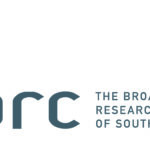
With PAMS (Publisher Audience Measure Survey) in field this month, the PRC (Publisher Research Council) discusses the advantages of the survey’s inclusion of brands, large sample size, innovative flooding technique, multi-platform measurement and other highlights.
The purpose of PAMS is to provide an innovative “Gold Standard” Reader Audience Measurement founded on global best-practice and local experience.
“The primary objective of the survey is to measure and track audiences across all reading platforms to enable the buying and selling of advertising. We (the publishing industry) felt that the high RPC (Readers Per Copy), so prevalent in AMPS, had to be addressed in order for us to get closer to the truth,” says Peter Langschmidt, consultant to the PRC. “Other elements in the brief to Nielson included the ability to fuse our currency survey to ES (Establishment Survey), IAB data and the PRC mobile reader panel.”
The face-to-face interviews in 10 000 households will be flooded to produce a sample of around 20 000. One of the biggest costs in any survey is actually getting to, for example, a household in Viljoenskroon, so why not take advantage of interviewing everyone in the house while the interviewer is there? Hence flooding which doubles the sample size, but not the cost.
To achieve a new and improved reader currency, newspaper prompts will be regionalised, so as not to waste time with publications unavailable in an area. For example, what’s the point of asking a Johannesburg based resident if they have read The Argus? Available publications are represented in both print and online formats, allowing respondents to simply select read titles.
Traditional readership methodology had the interviewer asking the respondent if they had read any of a long list of publications. In order to appear well read and informed, the respondent would reply in the affirmative to at least a few, normally unread, titles. This verbal barrage led to ‘respondent fatigue’ and the ‘halo effect’ of answering at least some titles positively contributed to over-claiming. The PRC has addressed this by handing the tablet, containing the mastheads of the titles, to the respondent allowing them to select titles in complete privacy.
“We believe that this, together with other changes we have implemented like reading or glancing at titles for longer than one minute, will go a long way in addressing the readers per copy issue,” comments Langschmidt.
Other improvements in the survey include ‘time spent reading’ for each publication to gauge loyal and regular reader measure, as well as a new visual frequency scale based on actual publishing intervals, and not a standard 4 or 5 point scale.
One of Print’s biggest strengths is that a single issue is read on multiple occasions, unlike other channels, like radio for example, where there is only one opportunity to hear per spot. PAMS asked readers about the number of times they pick up a single issue. “We’re hoping that the PAMS results will mirror other studies we have conducted this year where the average OTS of two is achieved in a single issue advert. This effectively halves the CPT of newspapers and magazines,” says Langschmidt.
PAMS also measures if and how inserts are used by readers.
With the exclusion of brands from the Establishment Survey the PRC took the decision to include many brands from major adspend categories. These include cellular networks, financial institutions, automotive, and retail – food and grocery, furniture and clothing. For detailed information regarding the brands and products, please contact the PRC or download the PAMS questionnaire from the website.
All the usual demographics (Language, Literacy, Gender, Age, Ethnic Group, Income, Education), geographics (Province, Community, Metros) will be available complete with LSM and SEM measurements. These together with other frequency and recency questions form the fusion variables, or ‘hooks’ into the ES, IAB and other data, including the Nielsen CPS household panel.
“Obviously the questionnaire is set, but the PRC looks forward to engaging with everyone regarding the questions asked in PAMS and looking at possible additions to be added to the next survey,” concludes Langschmidt. “We want to achieve the most complete measurement of reader audiences, across all platforms, to inform effective advertising investment.”
The survey fieldwork began on 11 July 2017 and the full PAMS data release and launch will happen in early February 2018.
For additional information and research on reading, visit www.prc.za.com.
- Automation and AI: Super-Tools to level up your business - 24th July 2024
- Salesforce Launches First Autonomous AI Agent - 19th July 2024
- WPP champions inclusive creativity at inaugural Unite South Africa Awards during Pride Month - 19th July 2024




